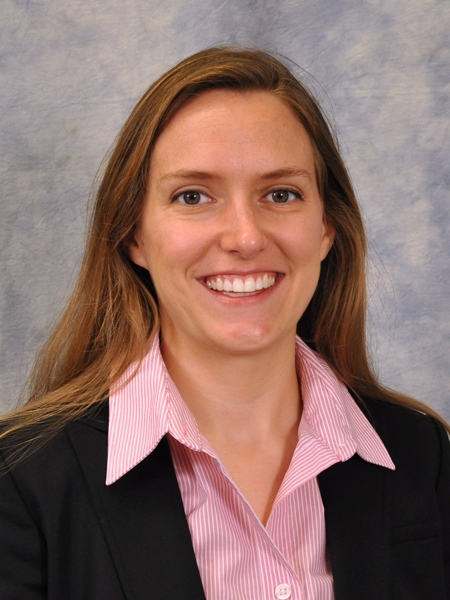
Dr. Gregory C. Burton
Dr. Burton has over 20 years experience in the analysis and simulation of turbulent flows. He earned a Ph.D. in 2003 in Aerospace Sciences from the University of Michigan, where as FXB Fellow, he studied computational fluid dynamics under Professor Bram van Leer and turbulence modeling under Professor Werner Dahm. He was one of 8 of 650 doctoral candidates to receive the Rackham Distinguished Dissertation Award in 2004. He continued his research as a postdoctoral fellow at Stanford University’s Center for Turbulence Research between 2003-2005 and in AX Division at LLNL between 2005-2008. He returned to Stanford University to serve as the CTR’s Senior Fellow between 2009-2010. Since returning to LLNL in 2010, he has worked in the Computational Engineering Division where he continues to specialize in developing numerical methods for the simulation of turbulent mixing and reacting flows using large-eddy simulation and Reynolds-averaged Navier-Stokes techniques. He focuses particularly on problems involving hypersonic flows, small-scale mixing, vortex dynamics and buoyancy-driven instabilities using his Nonlinear LES method in massively parallel configurations. He also has a primary role in establishing and running LLNL’s new Turbulence Analysis and Simulation Center (TASC), which specializes in applying advanced turbulence-simulation tools to a wide variety of turbulence, mixing and combustion-related problems encountered at LLNL and in industry.

Dr. Victor M. Castillo
Vic Castillo is an engineer in the Computational Engineering Division with experience in hypersonic flow, turbulent convection, massively-parallel fluid code development, and chaos theory. Vic has developed a dual-grid solver for the compressible Navier-Stokes equation using cubic splines and has led an effort to analyze the relation between the thermal entropy production and the rate of information loss as a convecting system approaches a fully-turbulent state. At LLNL, Vic also has co-developed an implicit solver for multi-species hypersonic flow. Additionally, Vic contributes substantially to the STEM outreach program, which seeks to expose teachers and students to the value of computer modeling and simulation. Read a news release about Vic's work with the STEM outreach program, and learn more about Vic's remarkable own background here.

Dr. David M. Dawson
Dr. Dawson received a Ph.D. in Aeronautics and Astronautics from Stanford University in 2015 where his dissertation research under Professor Sanjiva Lele of the Center for Turbulence Research focused on Large Eddy Simulation (LES) of Compression Ramp Shock Turbulent Boundary Layer Interaction (STBLI) using both wall resolved and wall modeled techniques. He was awarded an M.S. in Aeronautics and Astronautics from Stanford University in 2010 and graduated Summa Cum Laude with a B.S. in Applied Physics from UC Santa Cruz in 2007. David has worked at Lawrence Livermore National Laboratory since 2011 where he is a member of the Turbulence Analysis and Simulation Center and the Thermal Fluids Group within the Computational Engineering Division. David’s research interests include turbulence, shockwaves, large-eddy simulation, direct numerical simulation, multi-phase flows, high performance computing, and numerical methods. His work at LLNL has included multi-phase modeling of liquid deuterium-tritium saturated nanofoams under extreme acceleration for the LIFE project, Argon release risk assesment for the NIF facility, and model development, implementation, and evaluation for Multi-phase Blast Explosives (MBX) using the ALE3D code.
Dr. Daniel Driver
Dr. Driver started as an engineer in LLNL's Defense Technologies Engineering Division in 2016 after receiving a Ph.D. in Mechanical Engineering with a Designated Emphasis in Computational and Data Science and Engineering from the University of California, Berkeley. As an undergraduate, he also studied at the University of California, Berkeley and was awarded a B.A. in physics in 2011. For his dissertation under Prof. Tarek Zohdi, Daniel studied multi-physics discrete element methods for modeling additive manufacturing processes and developed a domain specific language for computational mechanics. His interests span a wide variety of engineering disciplines and during summers as a graduate student he worked at LBNL on simulations for the Next Generation Light Source, at Siemens Energy on electro/magneto-hydrodynamics for novel casting methods and at LLNL on powder scale simulations of selective laser melting.

Dr. Ik Jang
Dr. Ik Jang joined LLNL in late 2016 as a postdoctoral researcher. He specializes in numerical methods in fluid dynamics and large-scale parallel computing, with his PhD work focused on modeling fluid behavior in scramjet engines. He also has experience with supersonic combustion and high-fidelity simulation techniques. At LLNL, his research interests have included multi-phyiscs hypersonic flows in massively parallel configurations, and multi-phase flows in practical applications, such as jet engines an industrial dryers. Ik holds a MS/PhD in mechanical engineering from Stanford University and a BS in mechanical engineering from Seoul National University.

Dr. Katherine Lundquist
Katherine Lundquist is a mechanical engineer in the Computational Engineering Division. She has wide ranging interests in the fields of computational fluid dynamics and scientific computing, and is interested in novel applications of CFD to both engineering and environmental problems. She is primarily interested in multi-scale CFD modeling, the development of coupled models, turbulence closures and near-wall stress parameterizations for large-eddy simulation, and immersed boundary methods. She is experienced in atmospheric modeling over complex terrain, transport and dispersion processes, and aerodynamics. Katherine earned a Ph.D. in Mechanical Engineering from the University of California, Berkeley, where she focused on improved surface boundary conditions and numerical algorithm development for simulations of atmospheric flow over complex terrain. While at Berkeley, she developed an immersed boundary method for the Weather Research and Forecasting (WRF) model, which is a non-conforming grid technique for explicitly resolving complex terrain.
Ryan Vignes, MS, PA
Ryan Vignes is a mechanical engineer in the Computational Engineering Division. Ryan has made significant contributions to recent TASC space technology projects, including helping set up and run the first-ever three-dimensional turbulent reactive flow simulation of a novel aerospike engine design. He was also instrumental in the first ever fully 3-D large-eddy simulation study of the dynamics of impinging jets, commonly used in liquid rocket-engine injector desigins. Ryan has contributed a wide variety of other skills to TASC projects, including meshing complex industrial geometries for multiscale, multiphyiscs turbulence simulations.




